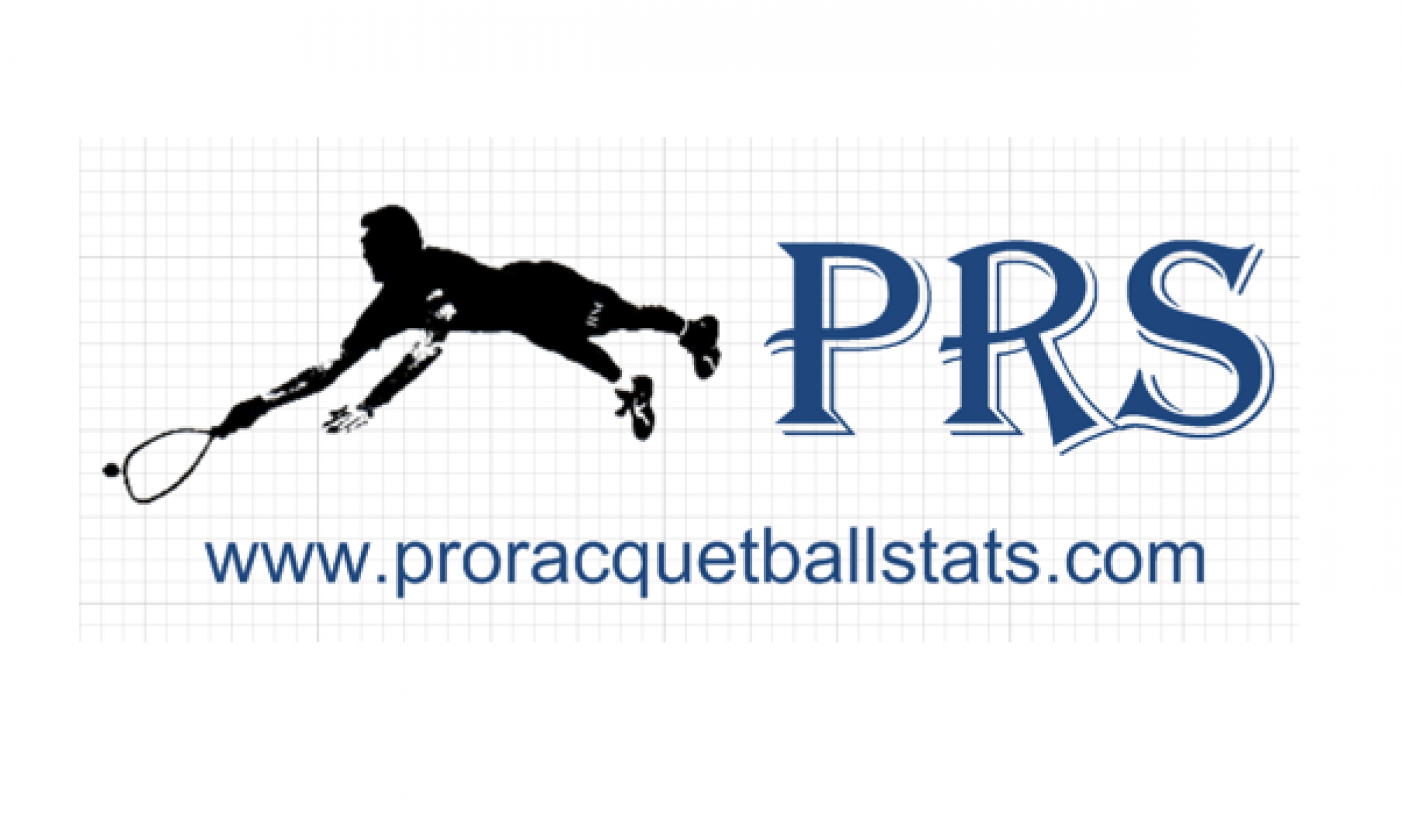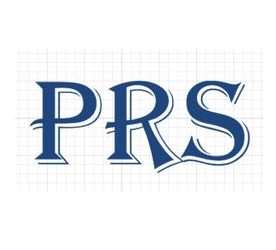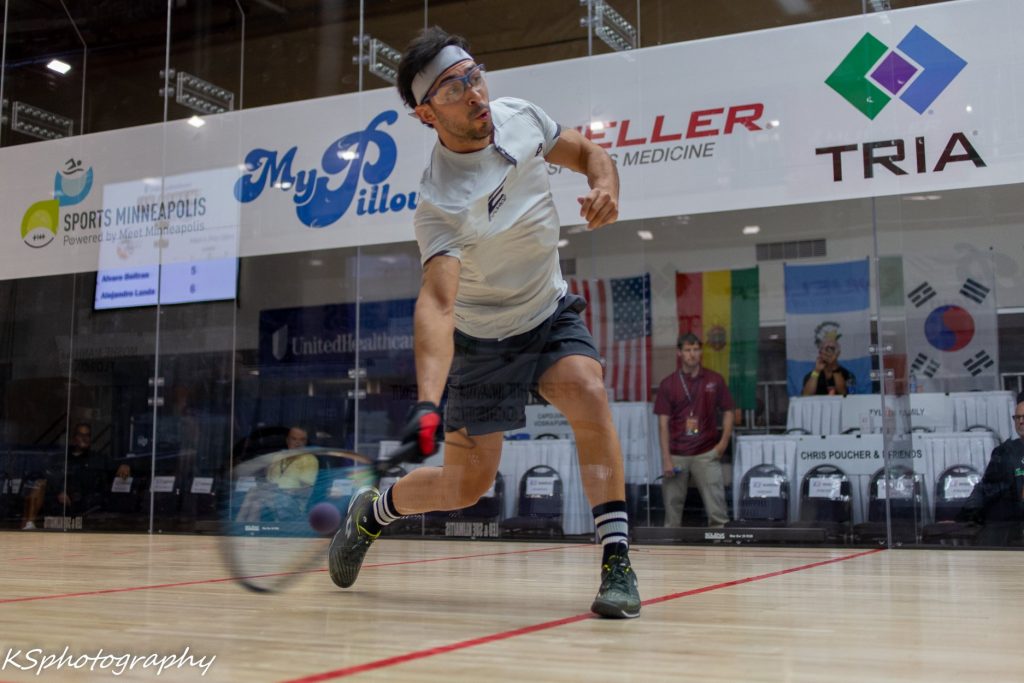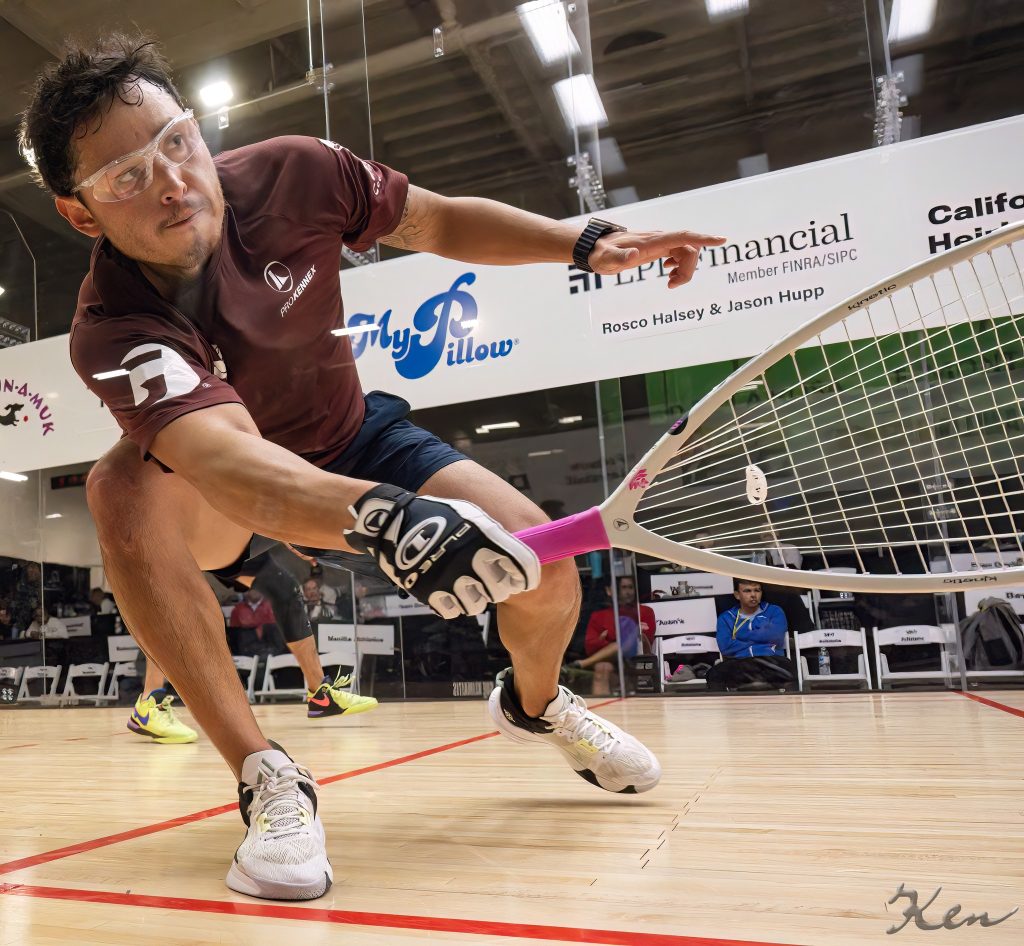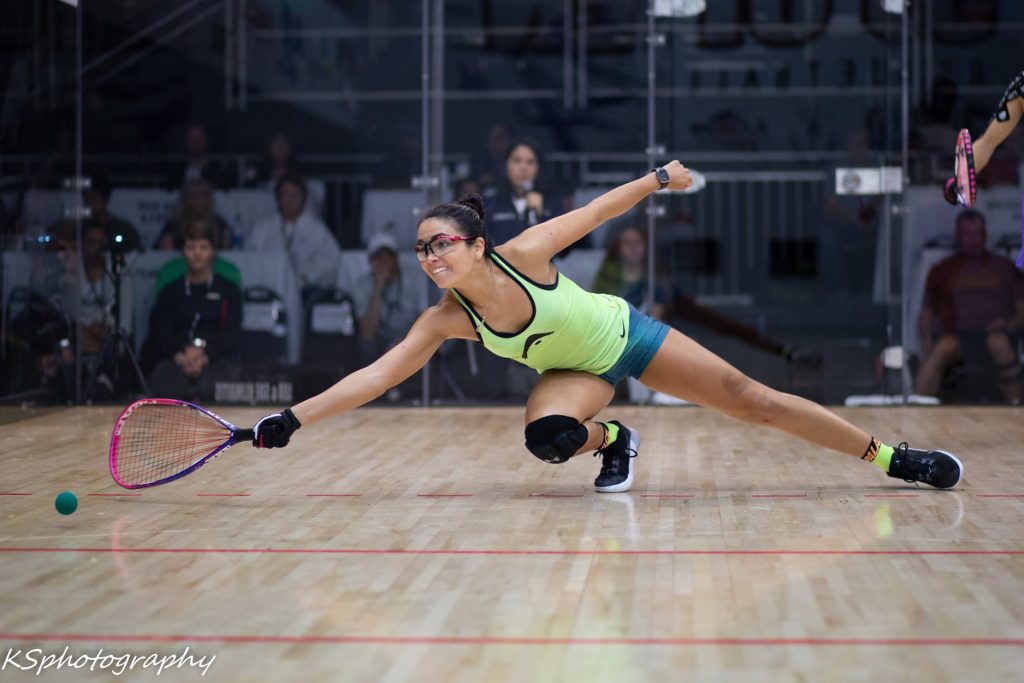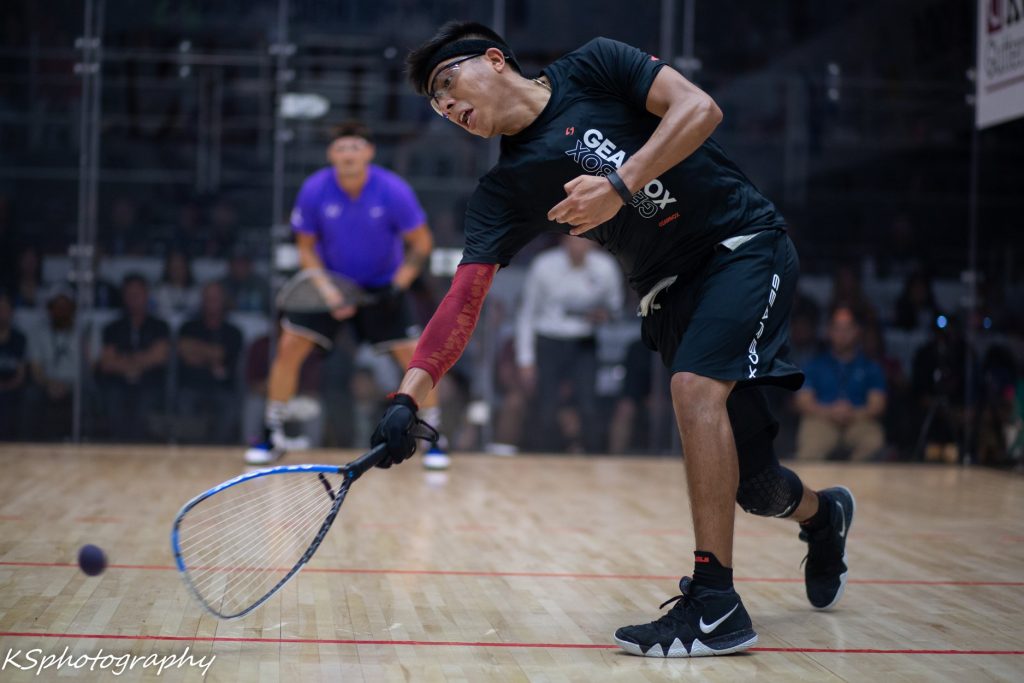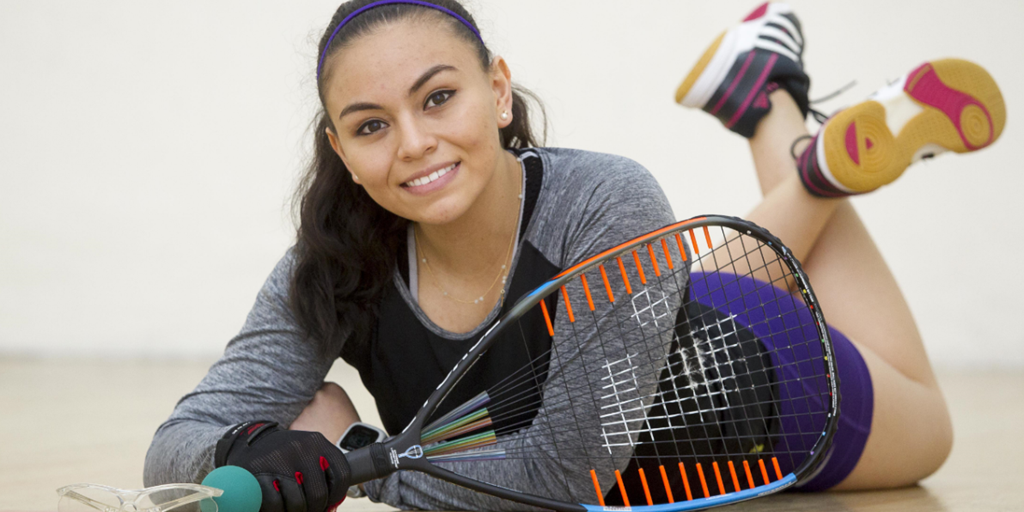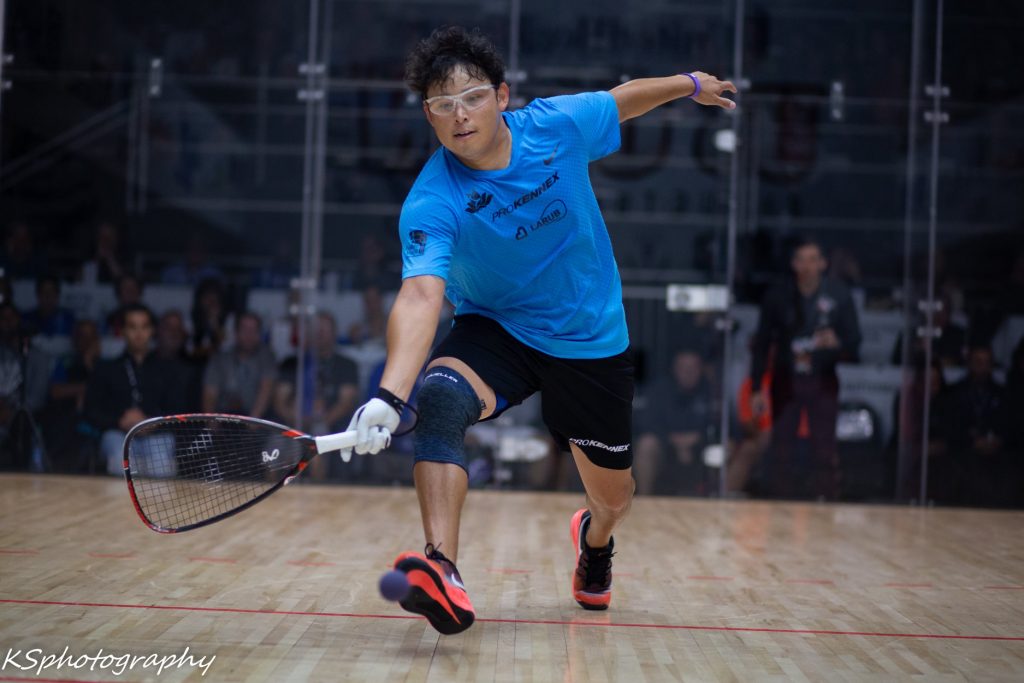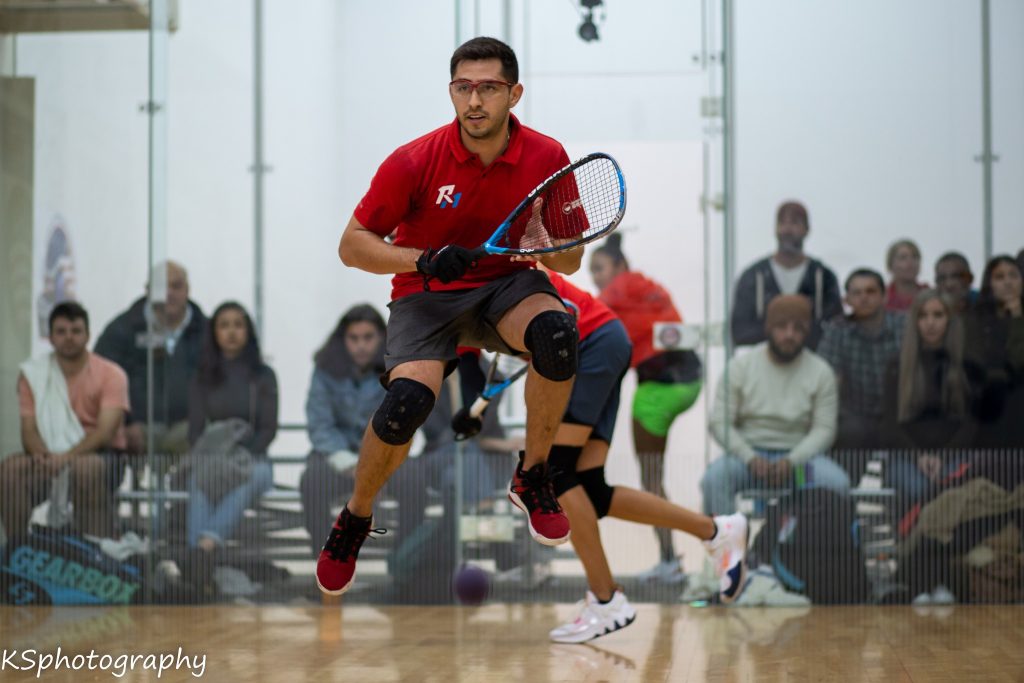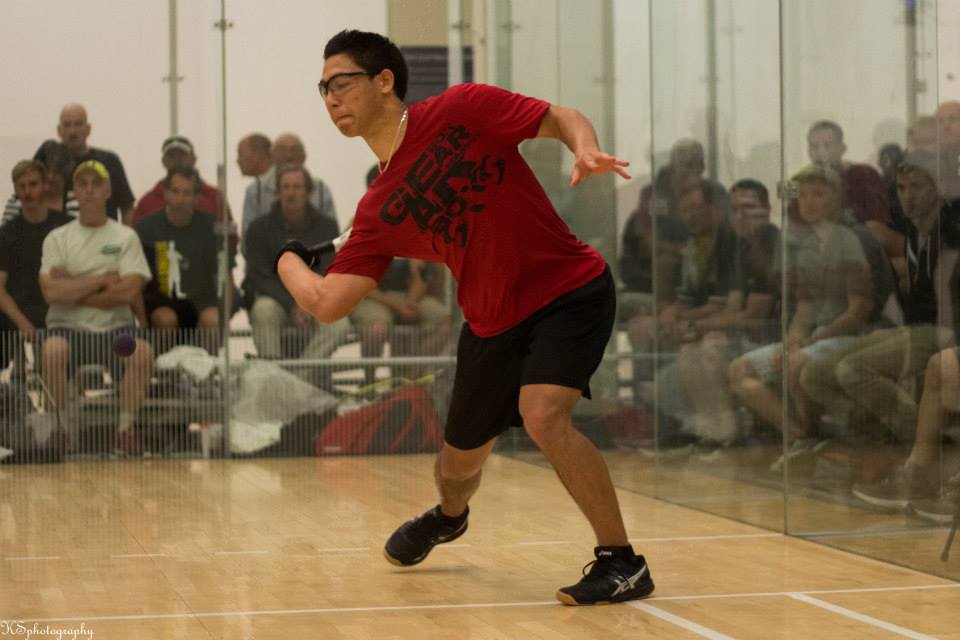Here’s the last in my end of season series, taking a look at the seminal events of the season and then looking forward.
– 1/5/23: IRT and Gearbox officially announce what has been rumored for a few weeks: Gearbox has replaced Head/Penn as the official ball and official equipment manufacturer of the IRT. This ends a nearly 20-year agreement Penn had to provide the official IRT ball. Gearbox’s balls are known to be more “durable” and “more consistent” … but are also known to be noticeably slower than other balls in the sport. How does this end up changing the pro game? For this observer, on panel courts, the portable court, and places not at altitude, the game plays significantly slower, which highlights a need for accuracy and shot making. At altitude and/or on cement, the ball plays more “normally” and power players do not appear affected.
– 1/9/23: Despite losing the Longhorn Open final, #3 Conrrado Moscoso ascends to the #1 spot on tour. This is the first time a player from outside the Big-3 countries of the sport has achieved #1, and is a seminal career moment for the Bolivian.
– 1/20/23: For the 2nd time in three years, Rodrigo Montoya is given the
Teporaca de Oro by his home state of Chihuahua for his accomplishments in the sport. Unfortunately he has to miss the Lewis Drug Pro/Am to get the award, costing him valuable ranking points. By season’s end it doesn’t really impact where he ended up; he finished well behind Jake for #3.
– 1/26/23: #12 Mario Mercado is given the inaugural Mark Griffin Sportsman of the Year Award at the Lewis Drug Pro-Am. Griffin first started the Lewis Drug Pro/Am tournament in 1978, and it is the longest running pro event in the country. The award will be presented annually to the player who most exemplifies the spirit of fair play and outstanding athletic performance of Men’s IRT tour professionals. Ironically, Mercado doesn’t play an event the rest of the season.
– 2/19/2023: the IRT has pivoted away from its tiered qualifying system and is going to a straight draw; no more byes into the 16s for the top 8 pros. Everyone starts in the 32s or the 64s if the draw is large enough. I don’t have a dog in this fight, but this seems to me to be an anti-player move, especially for the top 8 guys. Remember, top 8 players sign an agreement that purposely limits their ability to enter non-IRT sanctioned events, and in return they (for nearly 20 years) got protected seeding in return. Without the protected seeding, why agree to limit your own earning potential? It is also an inarguable fact that tiered qualifying is better for lower ranked players as well, for reasons i’ve covered many times in this space. Uninformed observers are convinced that this is a good thing, but you can count on one hand the number of round of 32 matches top eight players have played this year that were even remotely competitive.
– 2/19/23: #1 Moscoso skips the Williams Accounting Open in Atlanta to be part of the festivities of the celebration of Carnival in his home country. Its the only event he misses all season, but it proves to be a massive absence. De La Rosa wins the event and its valuable 600 ranking points, while Moscoso eventually finishes 2nd by just 226 points at season’s end. A semi’s finish or better in Atlanta would have changed the season ending rankings.
– 3/5/23: Rodrigo Montoya becomes the 45th man to ever win an IRT event, topping his doubles partner Mar in the 16s, then topping the 1st, 2nd, and 3rd ranked players (Portillo, Moscoso, and De La Rosa) to win the title in Minnesota. This is finally enough to catapult Montoya, who has long been one of the best players in the world but was never ranked accordingly, into the top 4 where he belongs.
– 3/16/23: despite being in a nip and tuck battle for #1 on tour, DLR skips the Chicago Open to compete instead in a PPA pickleball event in Austin that happened the same weekend. By season’s end, it becomes clear that DLR’s move here is immaterial, but it was a gamble at the time.
– May 2023: Thanks to the large anticipated 2023 slate of events and the distance we’ve now put ourselves from Covid, the tour will be moving away from the rolling 11 tier 1s and back to a rolling 365-day calendar.
– May 2023: a couple of shots across the bow of the IRT player contract are made, as DLR & Landa play in an “Open” tournament in San Antonio while Portillo skips an IRT event (along with Acuna, who is outside the top ![]() to play in the Asian open. Both actions seem to be in violation of the IRT player contract, which stipulates that top 8 players may not play ANY non-IRT event and only a limited number of IRT satellite events per season. A bit later, Portillo takes to Facebook to complain that he had been fined $500 for the action, though the post is later taken down. It does beg a question as to the fairness of the IRT player contract, but the players can’t really do anything until the new year.
to play in the Asian open. Both actions seem to be in violation of the IRT player contract, which stipulates that top 8 players may not play ANY non-IRT event and only a limited number of IRT satellite events per season. A bit later, Portillo takes to Facebook to complain that he had been fined $500 for the action, though the post is later taken down. It does beg a question as to the fairness of the IRT player contract, but the players can’t really do anything until the new year.
– Aug 2023: World singles & Doubles happens in Denver thanks to two years of planning from Jim Hiser, and with the loss of the US Open this is the defacto US Open of the season. It has the biggest draws of the season by far.
– Aug 2023: With the cancellation of the Portland Tourney of Champions as a Tier 1, the tour will have exactly 10 tier 1s/Grand slams by the end of 2023. Per the player
contract, the year end title will be determined by the sum of these 10 events. The 3 competitors for the title (Jake, DLR, Moscoso) each face different challenges in the race to #1: Moscoso missed the Grand Slam, DLR missed Chicago, and Jake has a ton of late 2022 points to defend.
– Sept 2023: Alex Landa announces in a Facebook post that he’ll be retiring as of the last event of the 2023 season from professional racquetball.
– 11/12/2023: Kane Waselenchuk, who had not played professional singles since his Achilles heel tear in September 2022, enters the Boston singles event with little fanfare and advances to the semis, beating #11 Robbie Collins, #6 Adam Manilla, and most notably #3 Conrrado Moscoso with relative ease. He nearly beats #2 Jake Bredenbeck in the semis, but seemed to pick up an injury that hampered his movement, losing in a tiebreaker. Still, its an amazing return to form for the 14-time pro tour champ, and his defeat of Moscoso had huge implications for the year end race.
– 11/13/23: Jake Bredenbeck ascends to #1 ranking on tour for the first time with his finals appearance in Boston.
– 11/20/23: the tour race for #1 is going to be closer than it has been for nearly a decade, so much attention is paid to the machinations of the two remaining events. Thanks to Moscoso’s upset loss in Boston, DLR’s semi final appearance, and Jake’s final’s showing … the end of year race becomes clear. Moscoso cannot win the title. Jake can win the title, but he needs to win Pleasanton and hope that Daniel loses relatively early. DLR can sew up the 2023 title with at least a semis appearance in Pleasanton, or a quarter’s appearance if Jake loses before the final.
– 12/9/23: A Jake Bredenbeck loss in the quarters of the Golden State Open sealed the 2023 title for De La Rosa before he even took the court for his critical quarterfinal against Acuna. Daniel won that match and his semi to resolve any question as to his #1 status, though he ended up losing the finals badly to #2 Moscoso.
– 12/10/23: In the post-game interview after the Golden State Open final, Daniel De La Rosa announced that he will not be “touring full time” in 2024, alluding to his
commitments to “another sport.” There’s little surprise here; he signed an 3-year contract with the Professional Pickleball Association in August which guarantees a salary, benefits, and expense reimbursement to play professional Pickleball. His main sponsor Pro Kennex and Mike Martinez tried to manage the situation on social media by noting that DLR is a “multi sport” sponsored player and has expectations of continuing to play and compete in racquetball, but as they say, we’ll see how it goes.
————————-
Now for some commentary on the state of the IRT at the end of 2023 and heading into 2024.
Despite having 10 tier 1s in 2023, the tour saw a pretty steep decline in overall participation. In 2022, there were 245 players who competed in one of the IRT’s events; that number dropped to just 133 in 2023. That’s more than 100 players who didn’t travel or didn’t enter an event who had a year prior. Draw sizes were way down; at the beginning of 2022 draws were routinely in the 40s; by the end of 2023 the tour was struggling to get 25 players. Denver and the portable court helped bump things up (those two events got 56 and 48 players respectively) but there’s a big gap of players missing.
We’ve definitely seen a changing of the guard as long-time touring pros step back (Carson, Beltran, Landa, Franco, Mercado). We’re also seeing younger players who were touring relatively full time in 2022 stop touring (Fernandez, Keller, Garay). But we’re also seemingly missing a lot of the international guys who frequently traveled to every event, and we’re not seeing the younger Mexican’s coming over the border as much as we have in year’s past. So, that’s a problem.
A bigger problem is the loss of events. Here’s a quick list of IRT tier 1 stops that we seem to have “lost” just in the last couple of years:
– Longhorn Open in Jan
– The Lou Bradley in Feb
– Williams Accounting/Suivant Consulting in Feb
– Where’s the SoCal Open, usually in April?
– The Syosset Open in NY in May
– World Singles/Denver won’t happen in August 2024
– The Capital Classic in Severna Park in Sept.
– The US Open is not likely to happen in 2024
– We used to have an Arizona Open in Oct
– The Sarasota Open/Dovetail in Nov?
– Pelham ToC went down to a satellite this year in Dec.
Not to mention events we used to have regularly in St. Louis or Cincinnati or San Antonio or in Canoga Park. The tour has picked up some new events (Tracktown, Pleasanton, Boston) but not enough to offset all these losses. And it makes me worry about the 2024 season. Will the IRT even get to 6 events this coming year?
I’m not sure what the answer is. But the tour may be in some existential trouble. Many of the tour’s investors were also its regular tourney directors, and they’ve stepped back from sponsoring events. The IRT depends on local tourney directors to raise funds and make these events happen, and the decline of tournaments in general has fed into t his issue. DLR said he’s stepping back from touring … but if there’s just a handful of events, and he manages to make them all while playing the PPA tour full time … he could end up having the best of both worlds.
Lots to sort out in 2024. But I think its fair to say we havn’t seen the men’s tour face this many question marks since the fall of 1988 when it completely collapsed.
